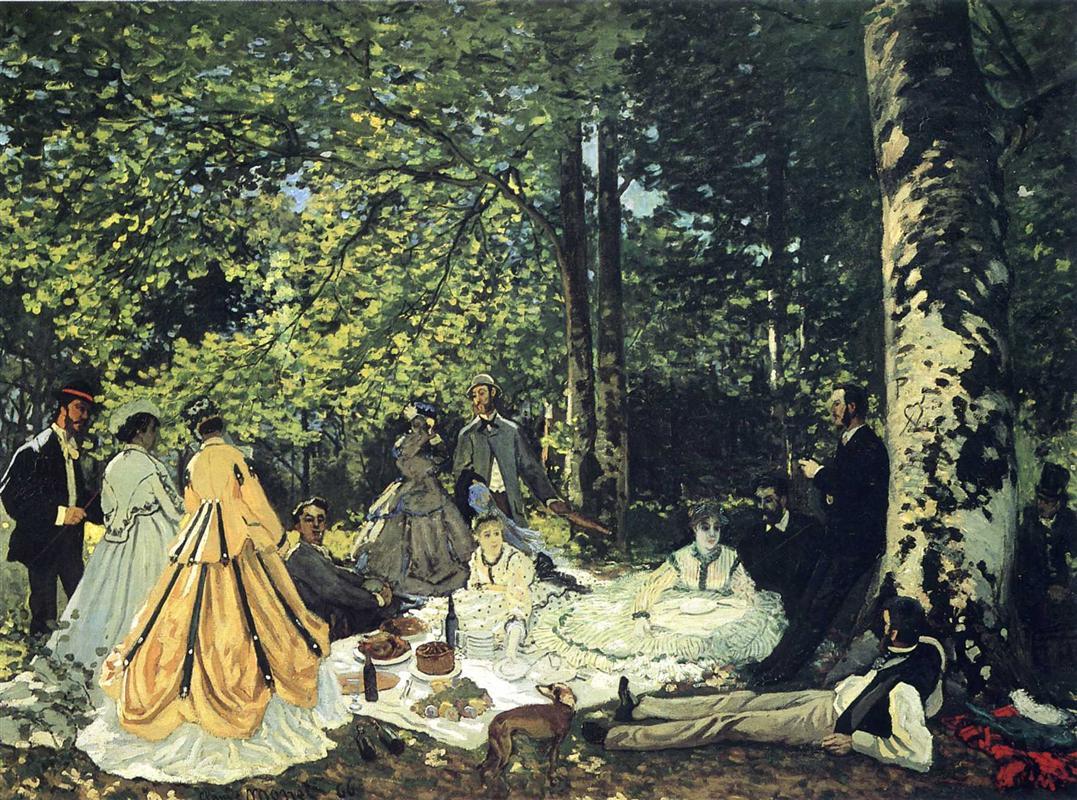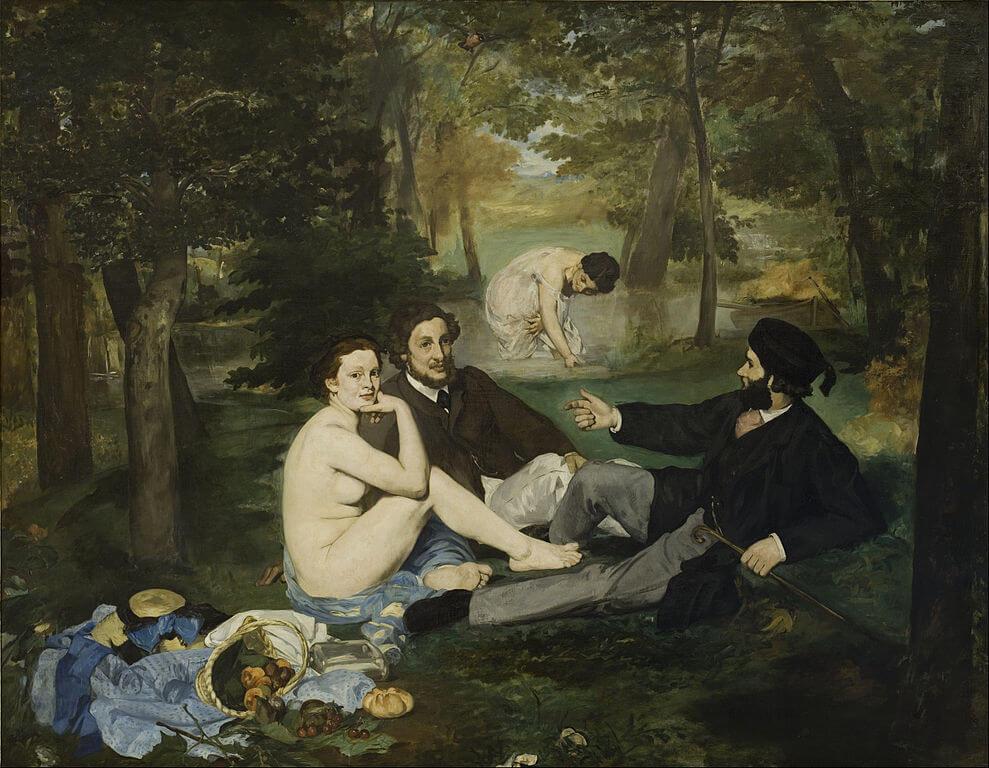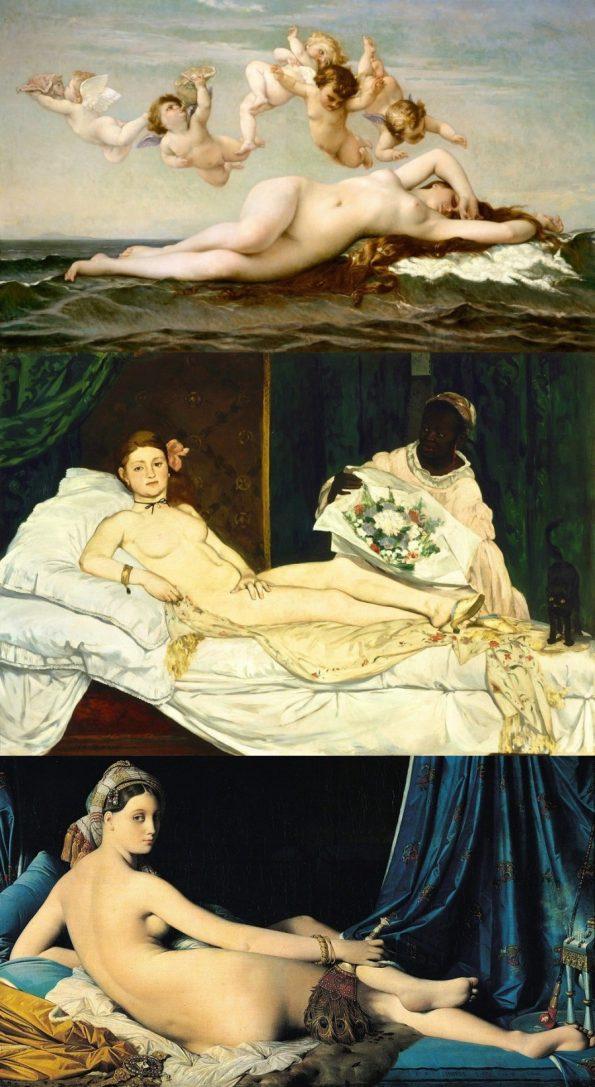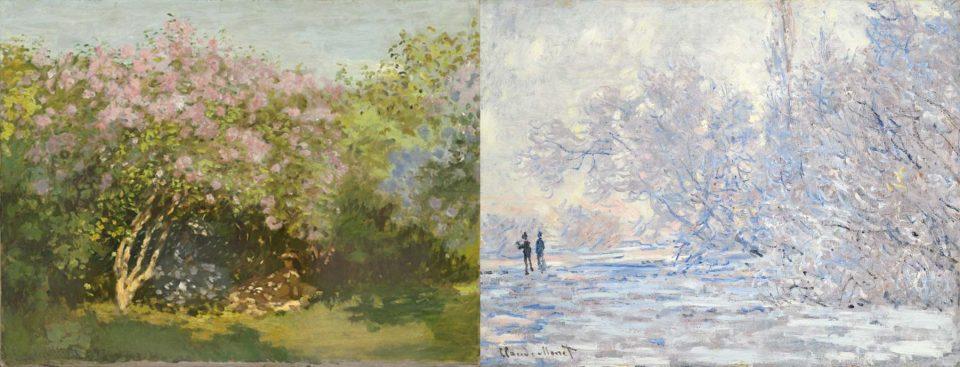
"Breakfast on the Grass" by Claude Monet. How impressionism was born
Contents:
Not everyone knows that Monet's "Breakfast on the Grass" in the Pushkin Museum is actually a study for the grandiose canvas of the same name. It is now in the Musée d'Orsay. It was conceived by a huge artist. 4 by 6 meters. However, the difficult fate of the painting led to the fact that not all of it was preserved.
Read about this in the article “Why understand painting or 3 stories about failed rich people”.
site "Diary of painting: in each picture - history, fate, mystery".
» data-medium-file=»https://i0.wp.com/www.arts-dnevnik.ru/wp-content/uploads/2016/07/image-11.jpeg?fit=595%2C442&ssl=1″ data-large-file=”https://i0.wp.com/www.arts-dnevnik.ru/wp-content/uploads/2016/07/image-11.jpeg?fit=900%2C668&ssl=1″ loading =”lazy” class=”wp-image-2783 size-large” title=”“Breakfast on the Grass” by Claude Monet. How impressionism was born" src="https://i2.wp.com/arts-dnevnik.ru/wp-content/uploads/2016/07/image-11-960×713.jpeg?resize=900%2C668&ssl=1 ″ alt=”“Breakfast on the Grass” by Claude Monet. How impressionism was born” width=”900″ height=”668″ sizes=”(max-width: 900px) 100vw, 900px” data-recalc-dims=”1″/>
"Luncheon on the Grass" (1866) Pushkin Museum - one of the most famous paintings by Claude Monet. Although she is not typical of him. After all, it was created when the artist was still looking for his own style. When the concept of "impressionism" did not exist. When his famous series of paintings with haystacks and the London Parliament were still far away.
Not many people know that the painting in Pushkinsky is just a sketch for a larger canvas “Breakfast on the Grass”. Yes Yes. There are two "Breakfast on the Grass" by Claude Monet.
The second picture is kept in Musée d'Orsay in Paris. True, the picture was not completely preserved. Only on the basis of a sketch from the Pushkin Museum can we judge its original form.
So what happened to the painting? Let's start with the history of its creation.
Inspiration. "Breakfast on the Grass" Edouard Manet

Claude Monet was inspired to create "Breakfast on the Grass" by Edouard Manet's work of the same name. A few years earlier, he exhibited his work at the Paris Salon (official art exhibition).
It may seem ordinary to us. Nude woman with two dressed men. The removed clothes lie casually nearby. The figure and face of the woman are brightly illuminated. She looks at us confidently.
However, the picture produced an unimaginable scandal. At that time, only unreal, mythical women were depicted naked. Here, Manet depicted a picnic of ordinary bourgeois. The naked woman is not a mythical goddess. This is the real courtesan. Next to her, young dandies enjoy nature, philosophical conversations and the nakedness of an accessible woman. This is how some men rested. Meanwhile, their wives sat at home in ignorance and embroidered.
The public did not want such truth about their leisure time. The picture was booed. Men did not allow their wives to look at her. Pregnant and faint-hearted people were warned not to approach her at all.
Read about it in articles.
"Breakfast on the Grass" by Claude Monet. How impressionism was born.
Olympia Manet. The most scandalous painting of the 19th century.”
site “Diary of painting. In each picture - history, fate, mystery.
» data-medium-file=»https://i0.wp.com/www.arts-dnevnik.ru/wp-content/uploads/2016/09/image-28.jpeg?fit=595%2C735&ssl=1″ data-large-file=”https://i0.wp.com/www.arts-dnevnik.ru/wp-content/uploads/2016/09/image-28.jpeg?fit=900%2C1112&ssl=1″ loading =”lazy” class=”wp-image-3777″ title=”“Breakfast on the Grass” by Claude Monet. How impressionism was born" src="https://i0.wp.com/arts-dnevnik.ru/wp-content/uploads/2016/09/image-28.jpeg?resize=480%2C593″ alt=""Breakfast on the grass" by Claude Monet. How impressionism was born” width=”480″ height=”593″ sizes=”(max-width: 480px) 100vw, 480px” data-recalc-dims=”1″/>
Manet's contemporaries had the same reaction to his famous Olympia. Read about it in the article. Olympia Manet. The most scandalous painting of the 19th century.”
Claude Monet is preparing for the Paris Salon.
Claude Monet was delighted with the scandalous painting by Edouard Manet. The way his colleague conveyed the light in the picture. In this regard, Manet was a revolutionary. He abandoned soft chiaroscuro. From this, his heroine looks flat. It stands out clearly against a dark background.
Manet deliberately strove for this. Indeed, in bright light, the body becomes a uniform color. This deprives him of volume. However, it makes it more realistic. In fact, Manet's heroine looks more alive than Cabanel's Venus or Ingres' Grand Odalisque.

Monet was delighted with such experiments by Manet. In addition, he himself attached great importance to the influence of light on the depicted objects.
He planned to shock the public in his own way and attract attention to himself at the Paris Salon. After all, he was ambitious and wanted fame. So the idea to create his own “Breakfast on the Grass” was born in his head.
The picture was conceived in truth huge. 4 by 6 meters. There were no nude figures on it. But there was a lot of sunlight, highlights, shadows.
Read about all the vicissitudes of the picture in the article “Why understand painting or 3 stories about failed rich people”.
You can compare the painting of the Musée d'Orsay with the “Breakfast on the Grass” of the Pushkin Museum in the article “Breakfast on the Grass by Claude Monet. How impressionism was born.
site “Diary of painting. In each picture there is a story, a fate, a mystery.”
"data-medium-file="https://i2.wp.com/www.arts-dnevnik.ru/wp-content/uploads/2016/07/image-20.jpeg?fit=576%2C640&ssl=1″ data-large-file="https://i2.wp.com/www.arts-dnevnik.ru/wp-content/uploads/2016/07/image-20.jpeg?fit=576%2C640&ssl=1" loading ="lazy" class="wp-image-2818 size-thumbnail" title=""Breakfast on the Grass" by Claude Monet. How impressionism was born» src=»https://i1.wp.com/arts-dnevnik.ru/wp-content/uploads/2016/07/image-20-480×640.jpeg?resize=480%2C640&ssl=1 ″ alt=""Breakfast on the Grass" by Claude Monet. How impressionism was born» width="480" height="640" data-recalc-dims="1"/>
The work was hard. The canvas is too big. Too many sketches. A large number of sessions when the artist's friends posed for him. Constant movement from the studio to nature and back.
Read about it in the article “Breakfast on the Grass by Claude Monet. How impressionism was born.
site “Diary of painting. In each picture there is a story, a fate, a mystery.”
» data-medium-file=»https://i0.wp.com/www.arts-dnevnik.ru/wp-content/uploads/2016/09/image-26.jpeg?fit=595%2C800&ssl=1″ data-large-file=”https://i0.wp.com/www.arts-dnevnik.ru/wp-content/uploads/2016/09/image-26.jpeg?fit=893%2C1200&ssl=1″ loading =”lazy” class=”wp-image-3762″ title=”“Breakfast on the Grass” by Claude Monet. How impressionism was born" src="https://i1.wp.com/arts-dnevnik.ru/wp-content/uploads/2016/09/image-26.jpeg?resize=480%2C645″ alt=""Breakfast on the grass" by Claude Monet. How impressionism was born” width=”480″ height=”645″ sizes=”(max-width: 480px) 100vw, 480px” data-recalc-dims=”1″/>
Monet did not calculate his strength. Only 3 days left before the exhibition. He was sure there was still too much to do. In frustrated feelings, he abandoned the almost finished work. He decided not to show it to the public. But I really wanted to go to the exhibition.
And for the remaining 3 days, Monet paints the picture “Camille”. Also known as "The Lady in the Green Dress". It is made in a classic style. No experiments. Realistic image. Overflows of a satin dress in artificial lighting.
Look for the answer in the article “Breakfast on the Grass by Claude Monet. How impressionism was born.
site “Diary of painting. In each picture there is a story, a fate, a mystery.”
» data-medium-file=»https://i0.wp.com/www.arts-dnevnik.ru/wp-content/uploads/2016/09/image-25.jpeg?fit=595%2C929&ssl=1″ data-large-file=”https://i0.wp.com/www.arts-dnevnik.ru/wp-content/uploads/2016/09/image-25.jpeg?fit=700%2C1093&ssl=1″ loading =”lazy” class=”wp-image-3756″ title=”“Breakfast on the Grass” by Claude Monet. How impressionism was born" src="https://i1.wp.com/arts-dnevnik.ru/wp-content/uploads/2016/09/image-25.jpeg?resize=480%2C749″ alt=""Breakfast on the grass" by Claude Monet. How impressionism was born” width=”480″ height=”749″ sizes=”(max-width: 480px) 100vw, 480px” data-recalc-dims=”1″/>
The audience liked Camille. True, critics were perplexed why part of the dress did not fit into the “frame”. In fact, Monet did it on purpose. To soften the feeling of staged posing.
Another attempt to get to the Paris Salon
“Lady in a Green Dress” did not bring the fame that Monet counted on. In addition, he wanted to write differently. He wanted, like Edouard Manet, to break the classical canons of painting.
The following year, he conceived another major painting, Women in the Garden. The painting was also large (2 by 2,5 m), but still not as huge as “Breakfast on the Grass”.
But Monet almost completely wrote it in the open air. As befits a true impressionist. He too wanted to convey how the wind circulates between the figures. How the air vibrates with heat. How light becomes the main character.
Read about it in the article “Breakfast on the Grass by Claude Monet. How impressionism was born.
site “Diary of painting. In each picture there is a story, a fate, a mystery.”
» data-medium-file=»https://i1.wp.com/www.arts-dnevnik.ru/wp-content/uploads/2016/09/image-27.jpeg?fit=595%2C732&ssl=1″ data-large-file=”https://i1.wp.com/www.arts-dnevnik.ru/wp-content/uploads/2016/09/image-27.jpeg?fit=832%2C1024&ssl=1″ loading =”lazy” class=”wp-image-3769″ title=”“Breakfast on the Grass” by Claude Monet. How impressionism was born" src="https://i2.wp.com/arts-dnevnik.ru/wp-content/uploads/2016/09/image-27.jpeg?resize=480%2C591″ alt=""Breakfast on the grass" by Claude Monet. How impressionism was born” width=”480″ height=”591″ sizes=”(max-width: 480px) 100vw, 480px” data-recalc-dims=”1″/>
The painting was not accepted at the Paris Salon. It was considered sloppy and unfinished. As one of the members of the jury of the Salon said, “Too many young people are now moving in an unacceptable direction! It's time to stop them and save art!"
It is surprising that the state acquired the work of the artist in 1920, during the life of the artist, for 200 thousand francs. Let us assume that his critics thus took their words back.
The Salvation Story of "Breakfast on the Grass"
The public did not see the picture “Breakfast on the Grass”. She remained with Monet as a reminder of the failed experiment.
After 12 years, the artist still faced financial difficulties. 1878 was a particularly difficult year. I had to leave with my family from the next hotel. There was no money to pay. Monet left his “Breakfast on the Grass” as a pledge to the owner of the hotel. He did not appreciate the picture and threw it into the attic.
After 6 years, Monet's financial situation improved. In 1884 he returned for the painting. However, she was already in a deplorable state. Part of the picture was covered with mold. Monet cut off the damaged pieces. And cut the picture into three parts. One of them was lost. The two remaining parts now hang in the Musée d'Orsay.
I also wrote about this interesting story in the article “Why understand painting or 3 stories about failed rich people”.

After "Breakfast on the Grass" and "Women in the Garden" Monet moved away from the idea of painting large canvases. It was too inconvenient for outdoor work.
And he began to write less and less people. Except members of your family. If people appeared in his paintings, then they were buried in greenery or barely distinguishable in a snowy landscape. They are no longer the main characters of his paintings.

***
Comments other readers see below. They are often a good addition to an article. You can also share your opinion about the painting and the artist, as well as ask the author a question.
Main illustration: Claude Monet. Breakfast on the grass. 1866. 130 × 181 cm. The Pushkin Museum im. A.S. Pushkin (Gallery of European and American Art of the XNUMXth-XNUMXth centuries), Moscow.
Leave a Reply